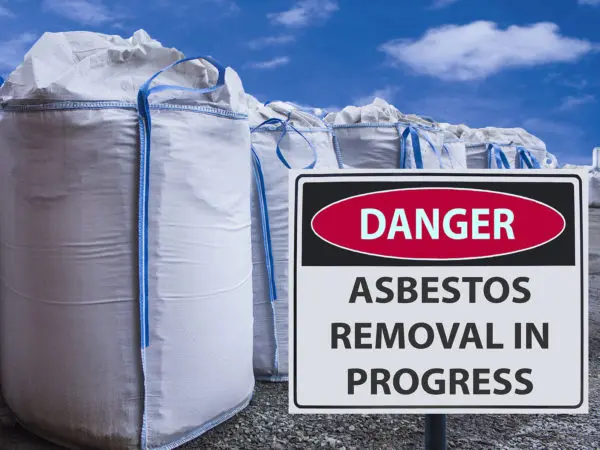
The Environmental Protection Agency (EPA) says asbestos should be properly handled when disposing of it. But, new research shows current disposal practices may still put people at risk for exposure.
Once removed from a home or jobsite, asbestos should go to a landfill qualified to receive it. Some people may assume this practice of burying asbestos keeps it from becoming a hazard. But, that assumption may be incorrect. Research now suggests this practice may allow the asbestos to escape containment. If so, the asbestos might then seep into groundwater and drinking water.
Buried Asbestos Has Potential to Leach Into the Water Supply
One common asbestos disposal strategy involves burying asbestos fibers to keep them from becoming airborne. Licensed landfills or Superfund sites may cover asbestos with multiple layers:
- Organic material directly over the asbestos waste
- A layer of soil on top of the organic material to cap off the buried waste
A recent study looked into whether or not burying asbestos can truly contain it. Results suggest burying asbestos does not permanently trap the mineral fibers in soil.
Researchers studied the interaction between asbestos fibers and dissolved organic materials. These organic materials may be found at a landfill or Superfund site. Experiments showed that asbestos interacts with organic materials in a way that may help asbestos fibers escape the containment area.
In the study, contact with dissolved organic materials made asbestos less sticky. The hair-like asbestos fibers traveled with water through small openings in the test soil. The water carried the fibers all the way out of the test soil sample.
Researchers suggest this same process could occur at a landfill or Superfund site. If asbestos fibers escape containment, millions of people could be exposed. This could put them at risk of developing mesothelioma, a cancer caused by asbestos.
Not All Organic Material Is the Same
The researchers also compared how asbestos reacted to different potential disposal conditions. They compared asbestos fiber movement in the following:
- Fully soluble organic matter
- Partially soluble organic matter
They found asbestos moved more easily through soil containing fully soluble organic matter. Fibers were more than 20x less likely to move through the partially soluble organic matter.
These tests suggest the type of organic material makes a difference. Fully soluble organic materials made it easier for asbestos to move than others.
Researchers plan to continue their work on this issue. They want to see if new disposal practices may make asbestos less toxic.
Motivation for Improving Mitigation Methods
Researchers have suggested these findings could have a significant impact on millions of Americans. As of late 2021, 51 active Superfund sites contained asbestos waste. If asbestos fibers can escape these sites or landfills, it may put the people living nearby at risk.
However, this research may help scientists and regulators keep those people safe. By understanding how materials interact with asbestos, the EPA can choose materials capable of truly safeguarding the dangerous fibers.
With better asbestos disposal methods, people will have better protection against hazardous materials. Until disposal methods improve, people may worry about living near an asbestos disposal site. Concerned individuals can find nearby Superfund sites using the EPA’s Superfund search tool.




